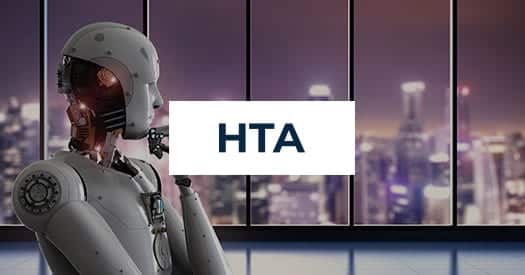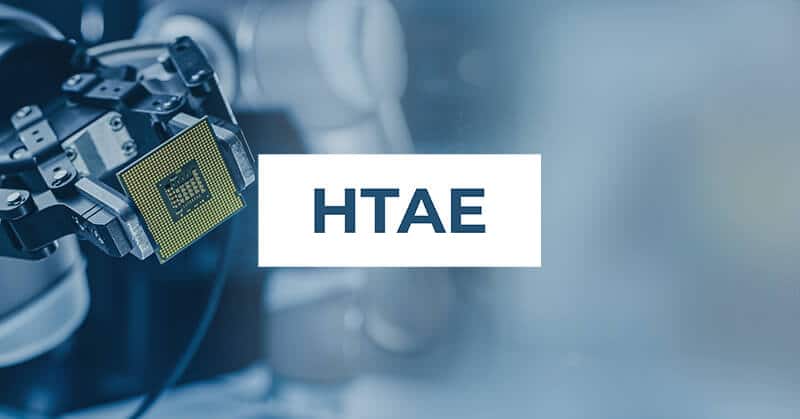By David Wysocki
The rise of AI has sparked a huge wave of investor interest. Generative AI tools like Chat GPT have many Canadians asking how they can invest in AI, or wondering if they’ve missed the wave of excitement around this new technology.
We believe that this latest wave of excitement around AI is only the first stage of investor interest in what could become a technological mainstay for years or even decades to come. There could be hiccups and corrections in this area of the market in the short-term, but in the long-term we believe in the investment prospects of AI technology.
The question remains, though, where can Canadian investors go to find AI exposure for their investment portfolios? We believe that Canadians looking to invest in AI could consider the prospects of a large-cap technology ETF.
What is AI and how do companies make money from it?
AI stands for Artificial Intelligence and AI technologies are essentially machines that can perform cognitive functions we normally associate with a human mind. These are functions like critical analysis, prediction, and the creation of original works. AI tools are all around us and have been integrated into technologies for almost three decades, whether in gaming, online shopping, or social media.
In 2023 much of the focus around AI has been on one specific subset: generative AI. Generative AI is a form of AI focused on the creation of original works. Generative AI tools can write text or code, create images, even generate audio and video.
The business applications of AI in general, and generative AI in particular, are wide. First and foremost, generative AI can help businesses operate more efficiently. Many repetitive process tasks such as writing technical guides, analyzing legal text, conducting background research or even generating graphics can be done with an AI tool.
AI, however, cannot replace human workers entirely. In their current state AI technologies can add efficiency and scale to certain tasks, but they are not replacing human workers—especially highly skilled workers—en masse.
Companies in the tech sector developing AI software, as well as hardware tools that support AI, are seeing immediate business impacts as their AI tools are now in demand from a wide range of industries. So far, large-cap tech companies have been leaders in this AI race.
Why large-cap tech companies are AI leaders
The rallying value of technology stocks in 2023 so far has been driven largely by large-cap tech companies. In a still-uncertain macro environment, investors have flocked to large-cap tech for the combination of market share, business fundamentals, and exposure to innovation that these companies bring.
One of the innovation trends that has peaked investors’ interest is the rise of AI, specifically generative AI—tools like Chat GPT or Dall-E that can generate an original image or piece of text. What has made this AI investment trend interesting, however, is that it has largely focused on large-cap companies.
Historically, when a new technology comes into investors’ focus, large-cap companies capture some positive growth trends, but the biggest gainers in the short-term are usually smaller cap tech companies tied directly to the new tech. In the case of generative AI, there has been a paradigm shift. Large-cap companies like Google, Meta, and Microsoft have been so quick to roll out and announce new AI tools that they’ve been some of the primary beneficiaries.
Put simply, large-cap companies have established leadership in the AI space. But, there’s another key reason why large-cap companies, especially combined in an ETF package, can be attractive for Canadians looking to invest in AI: diversification.

How diversified exposure can benefit an AI investor
It takes more than software to build a market-leading AI. The end output of a generative AI tool is built on incredibly complex algorithms, software platforms, cloud infrastructure, and—crucially—hardware like semiconductors.
Semiconductors are the fuel behind the rise of AI, as investors recently experienced through Nvidia’s stock boom. That spike followed forecasts from Nvidia of demand for their semiconductors from other large-cap tech companies building AI tools and platforms.
The rise of AI has had similar impacts on a range of different tech subsectors. It has impacted areas like tech devices, software, and hardware in different ways. Investors seeking exposure to AI can gain breadth of exposure through an ETF holding large-cap stocks from many tech subsectors.
The Harvest Tech Achievers Growth & Income ETF (HTA:TSX) works on the underlying investment thesis of investing in large-cap companies across the tech sector to gain diversification. HTA is designed to capture a range of growth opportunities in the technology sector, and the rise of generative AI has been a test case for the ETF’s long-term objective. Its varied exposure to large-cap companies in semiconductors, software, social media, and even IT services has allowed it to capture a wide range of positivity from investor interest in AI.
HTA adds one more strategy into the mix, something that can help Canadians who want to invest in AI and other innovative technologies: monthly income.
How income can help when investing in innovation
HTA uses an active & flexible covered call option strategy to generate a monthly cash distribution paid to its unitholders. We believe that this strategy adds a range of benefits for Canadians seeking to invest in an innovative sector like tech.
First and foremost, covered call income can help offset and even monetize market volatility. Because tech is a growth-oriented sector, it can experience some volatility (the up and down movement in stock prices). When markets are more volatile, the premiums earned on call options are higher. So, using a call option strategy in a sector like tech allows the HTA ETF to generate higher premiums or leave more of its portfolio exposed to potential market growth.
Perhaps more importantly, the monthly income paid by the HTA ETF can help investors offset potential losses in the short-term and contribute to total returns in the long-term. HTA is a diversified portfolio of large-cap tech companies with an income component that allows Canadians to gain exposure to companies at the forefront of AI while providing them with consistent monthly cashflow.
How HTA delivers AI exposure
Put simply, HTA is delivering AI exposure to its unitholders through its portfolio of large-cap tech companies. Many of those companies have established themselves as the leaders of the generative AI race so far. Moreover, because the portfolio holds a broadly diversified array of subsectors, HTA is exposed to many of the software and hardware demand trends related to AI. Finally, by including an income component, HTA can help offset or even monetize the volatility we see from time to time in tech, allowing investors to retain their exposure to AI and other major tech trends while providing a consistent monthly return in the form of income.

David Wysocki
David Wysocki is the VP of National Sales at Harvest ETFs. He is a seasoned sales executive who began his career as a financial advisor before taking on a sales role to develop the ETF market for a leading Canadian financial institution. David now leads a large team of sales professionals across Canada. He has a deep knowledge of Harvest products and the broader market and regularly presents ETF insights and macro commentaries to Canadian financial advisors.














